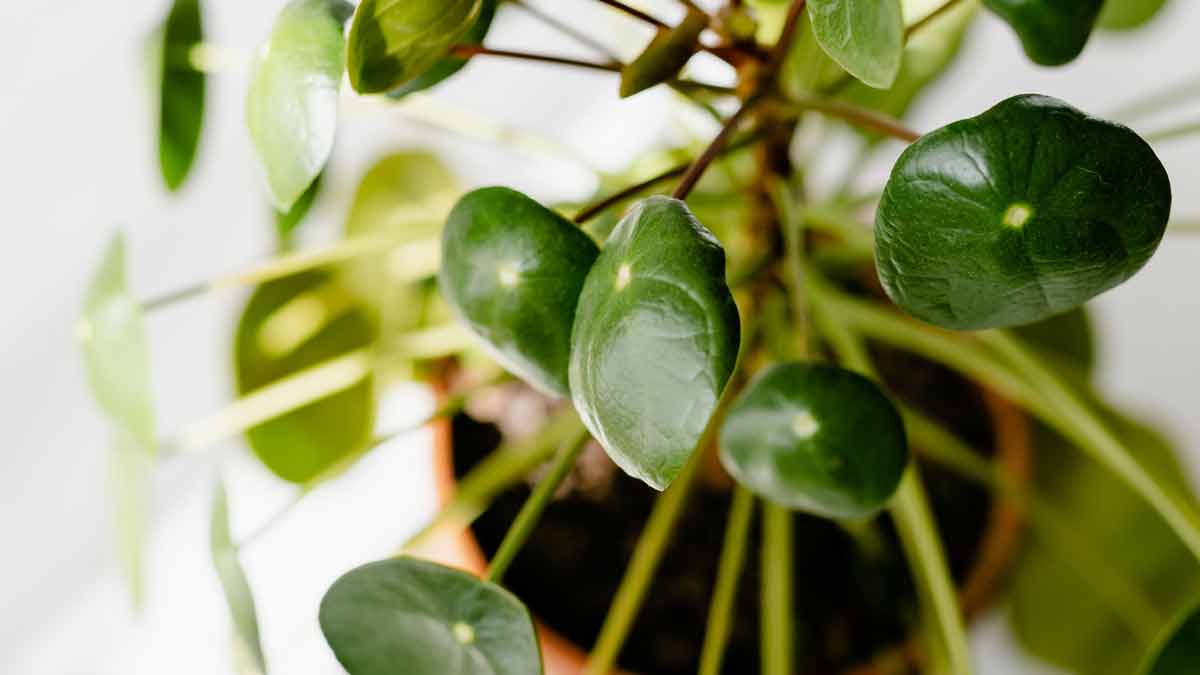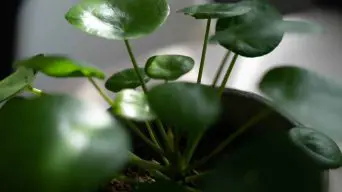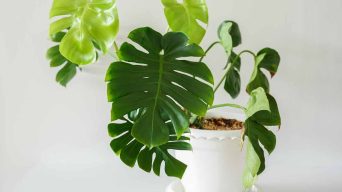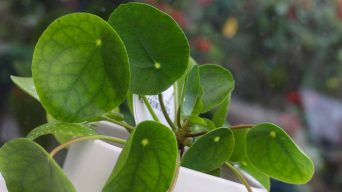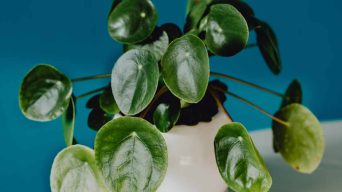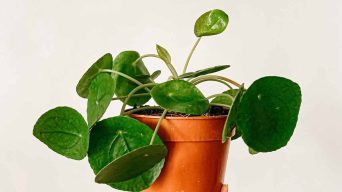Key Takeaways
- Root binding can negatively affect Pilea plant growth, including stunted growth and decreased nutrient uptake.
- While some varieties of Pilea may tolerate being root bound, it is important to understand the pros and cons before deciding to keep your plant in a smaller pot.
- To prevent root binding in your Pilea, choose a slightly larger pot size with proper drainage holes and use a well-draining soil mix. Repot every 2-3 years if needed.
Pilea peperomioides, also known as the Chinese Money Plant or UFO plant, has become a popular addition to many households due to its unique appearance and ability to bring good fortune.
As a plant owner, you may have wondered if your Pilea prefers being root bound when its roots fill the entire pot.
In this blog post, we’ll explore everything you need to know about root binding in Pilea plants, including potential consequences and preventive measures.
Understanding Root Binding
When a plant’s roots can’t grow because there’s not enough space in its container, they start to wrap around themselves.
This is called root binding, and it can damage the plant.
What Is Root Binding?
Root binding is a common phenomenon among potted plants, whereby the roots grow so densely and vigorously that they begin to dominate the container, leaving little room for soil.
As a result, vital nutrients, air, and water become increasingly scarce for the plant.
For example, consider a Pilea peperomioides (Chinese Money Plant) growing in the same pot for an extended period without being repotted or pruned.
Over time, its roots will start to encircle themselves within the confines of the pot.
In severe cases of root binding, you might even see these tightly wound roots forming dense masses near drainage holes or pushing their way out through spaces between the soil and container sides.
What Causes Root Binding In Plants?
Root binding in plants is primarily caused by neglect and container size.
Sometimes, a plant owner may unintentionally overlook the need to repot their beloved greenery, leaving them in the same pot for an extended period.
Another major cause of root binding is choosing an inadequately sized container for your plant.
For instance, small or shallow pots can constrict the development of roots – leading to a tangled and congested mess that competes for essential nutrients, air, and water.
On the flip side, using overly large containers can lead to excess moisture retention in soil, potentially resulting in root rot or other diseases.
The Effects Of Root Binding On Plant Growth
When plant roots become bound, it can adversely affect their growth, including reduced nutrient absorption and stunted development.
Stunted Growth
Stunted growth is a common symptom when a plant becomes root bound, as the restricted space leaves little room for roots to grow and expand.
When packed tightly in a small pot, the roots of your Pilea peperomioides struggle to access essential nutrients and water needed for proper development.
One example of stunted growth in Pilea plants can be observed when new leaves emerge smaller than previous ones or when the stem length between leaf nodes increases significantly.
You might notice that your Pilea has stopped producing new foliage in severe cases.
Decreased Nutrient And Water Uptake
One of the most significant effects of root binding on plant growth is decreased nutrient and water uptake.
When a Pilea or any other plant becomes pot-bound, its roots become overcrowded and begin to grow in circles around the container’s edges.
This leads to less soil surface area for absorption.
Additionally, when a pot-bound Pilea has limited access to water, it can experience dehydration, which causes its leaves to wilt quickly.
If left untreated for too long, this can lead to permanent damage or even death for your beloved plant.
Increased Susceptibility To Disease And Pests
When plants become root bound, they are more prone to pest infestations and disease.
The roots of a plant need adequate air and water circulation to function properly.
When the roots become tangled within a pot or the soil becomes overly compacted, it can make it difficult for the plant to absorb necessary nutrients and moisture.
This lack of nutrients weakens the plant’s immune system, making them more susceptible to pests such as spider mites, mealybugs, or aphids that feed on their leaves.
Root-bound plants are also at risk of developing diseases like root rot caused by excess moisture in the soil or fungal infections that thrive in damp conditions.
Root Binding In Pilea
When Pilea plants become root bound, their growth and overall health can be harmed.
However, it’s interesting to note that certain varieties prefer being root bound.
Understanding the advantages and disadvantages of a root-bound Pilea and recognizing when your plant requires repotting is important.
Pros And Cons Of Root Bound Pilea
Although some plants may appear to tolerate being root bound, it is essential to understand the pros and cons of a root-bound Pilea to ensure the health and well-being of your beloved plant.
Here is a table outlining the pros and cons of root-bound Pilea:
| Pros | Cons |
|---|---|
| Some Pilea may adapt to root binding and continue to grow, albeit at a slower rate. | Root binding can cause stunted growth in Pilea, affecting its overall appearance and health. |
| Being root-bound can promote flowering in certain plants, potentially enhancing the aesthetic appeal of your Pilea. | Decreased nutrient and water uptake can occur, leading to symptoms similar to those of an under-watered plant, such as wilting. |
| A root-bound Pilea may temporarily require less frequent watering, as the densely packed roots may retain moisture for more extended periods. | Root-bound Pilea plants are more susceptible to diseases and pests due to the weakened root system. |
| Root pruning can be an effective solution for root-bound Pilea, allowing the plant to remain in its preferred pot while promoting healthy root growth. | Root pruning can effectively solve root-bound Pilea, allowing the plant to remain in its preferred pot while promoting healthy root growth. |
Understanding the pros and cons of a root-bound Pilea helps plant owners make informed decisions about the appropriate course of action and maintenance for their plant, ensuring a healthy and thriving Pilea.
How To Tell If Your Pilea Is Root Bound
One way to tell if your Pilea plant is root bound is by checking its pot for signs of overcrowding.
It may be time to repot if you notice roots growing excessively out of the drainage holes or circling around the pot’s base.
Another sign of a root-bound Pilea is stunted growth and yellowing leaves not caused by nutrient deficiency or other environmental factors.
To avoid root binding in your Pilea, aim to repot every two years and choose a container with good drainage holes.
Use a well-draining soil mix and provide adequate water without overwatering.
The Consequences Of Root Bound Pilea
Root binding in Pilea can have serious consequences for the plant’s health.
As the roots become compacted and entangled within the pot, they can no longer absorb nutrients and water effectively.
This can lead to stunted growth, curling or browning of leaves, and even rotting of the root system.
Plant owners need to monitor their Pilea regularly for signs of root binding so they can take corrective action before these symptoms occur.
When repotting your Pilea, choose a container with proper drainage holes to allow excess moisture to evaporate quickly and prevent soil from becoming too soggy.
What To Do If Your Pilea Is Root Bound
If you observe that your Pilea has outgrown its current pot, transferring it to a bigger container with adequate drainage holes and new soil is advisable.
Repotting Your Pilea
If you notice your Pilea plant has become root-bound, it’s time to repot it.
Here are the steps you should follow:
- Choose the right pot size: When choosing a new pot for your Pilea, select one slightly larger than the current one. The excess soil in a larger pot can hold too much moisture, leading to issues like fungus gnats and root rot.
- Prepare the soil: Use a well-draining potting mix that contains perlite or vermiculite. You can also mix in some peat moss or coco coir to help retain moisture.
- Remove the plant from its current pot: Gently tap and loosen the soil around the roots before carefully lifting it out of its pot.
- Inspect the roots: Check the condition of your Pilea’s roots while repotting them. If they appear brown or mushy, trim them away with sterilized scissors before planting it in fresh soil.
- Add fresh soil: Place a layer of fresh soil in the bottom of your new pot, then position your plant at the center. Fill additional soil around its sides and tuck it firmly into place.
- Water thoroughly: Once you have finished repotting, water your newly potted plant deeply, but allow 1-2 weeks before watering again to avoid overwatering.
By following these steps, you can successfully repot your Pilea plant and help avoid issues caused by root binding, such as nutrient deficiency, stunted growth, and susceptibility to pests and diseases.
Pruning And Maintenance
Proper pruning and maintenance of your Pilea plant can help keep it healthy and looking its best.
Here are some tips to follow:
- Prune only when necessary: Pilea plants generally do not require much pruning unless you want to reshape the plant or remove discolored leaves. Use clean scissors or shears to avoid infection.
- Trim brown or yellow leaves: If you notice any brown or yellow leaves on your Pilea, remove them with a sharp blade to prevent the issue from spreading.
- Pinch back new growth: Pinching back new growth can help encourage bushier growth and prevent the plant from getting too tall.
- Dust off the leaves regularly: Use a soft, damp cloth to dust off the leaves of your Pilea regularly to keep them clean and help with photosynthesis.
- Monitor for pests: Check for pests such as mealybugs, spider mites, or scale insects that can damage your plant’s health. Treat infestations promptly using an appropriate pesticide.
Remember that even well-cared-for plants may still experience issues like root binding or nutrient deficiencies.
By monitoring your Pilea’s growth and making minor adjustments as needed, you can help ensure it stays healthy and vibrant for years.
Preventing Root Binding In Pilea
Selecting a pot slightly larger than the plant’s current container is best to promote healthy growth.
Use soil that drains well and ensure enough drainage holes at the bottom of the pot.
Choosing The Right Pot Size
Choosing the right pot size prevents root binding in Pilea plants.
As a general rule of thumb, you should select a container that’s about 2 inches larger in diameter than the plant’s root ball.
This will provide enough room for your Pilea to grow and avoid constriction due to lack of space.
It’s also important to note that healthy growth can cause roots to outgrow their container, so keep an eye on your plant and repot every 2-3 years.
For example, if your current pot fits comfortably within a saucer or tray with at least an inch of space around it, consider moving up one size when selecting its new pot.
Proper Soil And Drainage
Providing the right soil mix and drainage prevents root binding in your Pilea plant.
Here are some tips:
- Use a well-draining potting mix that contains materials like peat moss, vermiculite or perlite, and sand. Avoid using heavy soils or those that retain too much moisture.
- Ensure the container has drainage holes at the bottom to allow excess water to drain. If you’re using a decorative pot without drainage, use a nursery pot with holes inside and remove it for watering.
- Choose an appropriate container size that provides enough room for roots to grow but isn’t too large. A good rule of thumb is to select a pot one size larger than the current one.
- Use porous materials like terracotta pots over glazed ones because they can absorb excess moisture and promote better airflow.
- Water your Pilea only when the top inch of soil feels dry to touch, and don’t let it sit in standing water as it can lead to root rot.
Following these tips, ensure your Pilea plant has proper soil and drainage for healthy growth and avoid root-binding issues.
Keeping an eye on soil moisture using a soil moisture meter can also help assess when it needs watering.
Regular Repotting
Regular repotting is essential to prevent Pilea from becoming root bound.
As the plant grows, its roots outgrow the container and become tightly packed, resulting in stunted growth and diminished health.
Repotting also helps facilitate nutrient intake by allowing new roots to form and absorb nutrients more efficiently.
Remember that when repotting your Pilea, always choose a pot with good drainage holes at the bottom using porous materials like terracotta for proper airflow.
Fertilization And Watering Tips
Proper fertilization and watering are essential for the health and growth of your Pilea Peperomioides. Here are some tips to keep in mind:
- Fertilize your Pilea plant once a month during the growing season (spring and summer) using a balanced, water-soluble fertilizer.
- Dilute the fertilizer to half-strength, as over-fertilizing can cause fertilizer burn and lead to nutrient deficiency.
- Water your Pilea thoroughly until water drains from the bottom of the pot, then wait for the top inch of soil to dry out before watering again.
- Bottom watering is a good option for Pilea plants as it allows the roots to absorb moisture without leaving excess water in the soil.
- If your Pilea leaves are curling or drooping, it may be a sign of over or underwatering – adjust accordingly.
Remember to keep an eye on your Pilea plant and adjust its care based on humidity, sunlight exposure, and temperature levels in your home environment.
Final Thoughts
While some plants do not enjoy being root bound, the Chinese Money Plant thrives in cramped conditions.
However, ensuring your Pilea has good drainage and enough space to grow if needed is important.
By choosing the right pot size and soil mix and providing regular care for your plant, you can help it stay healthy and happy for years.

